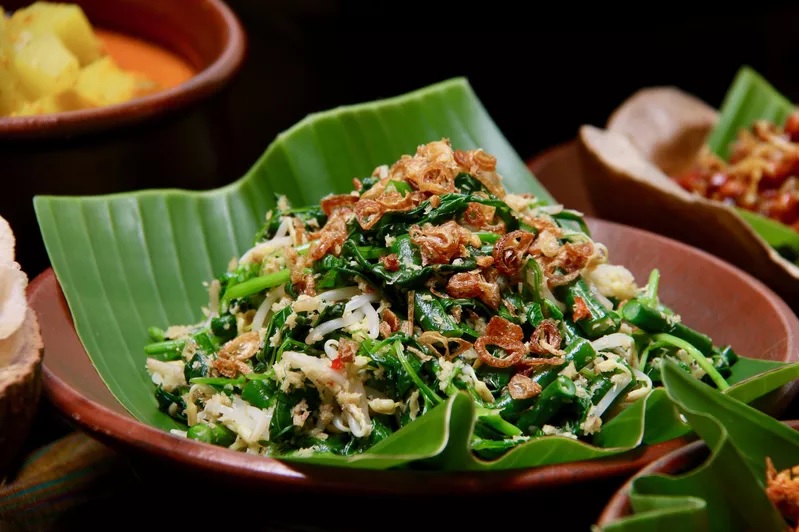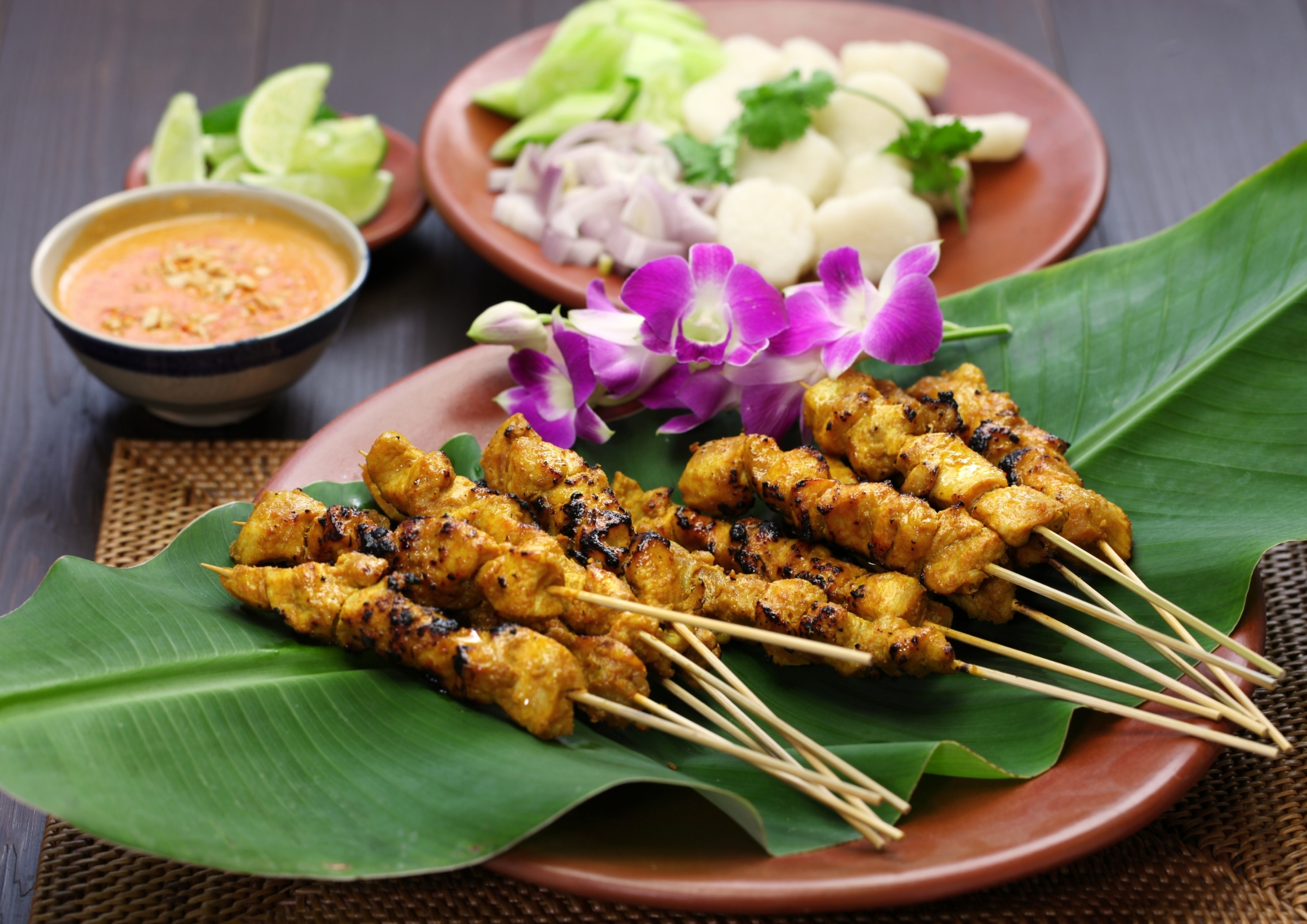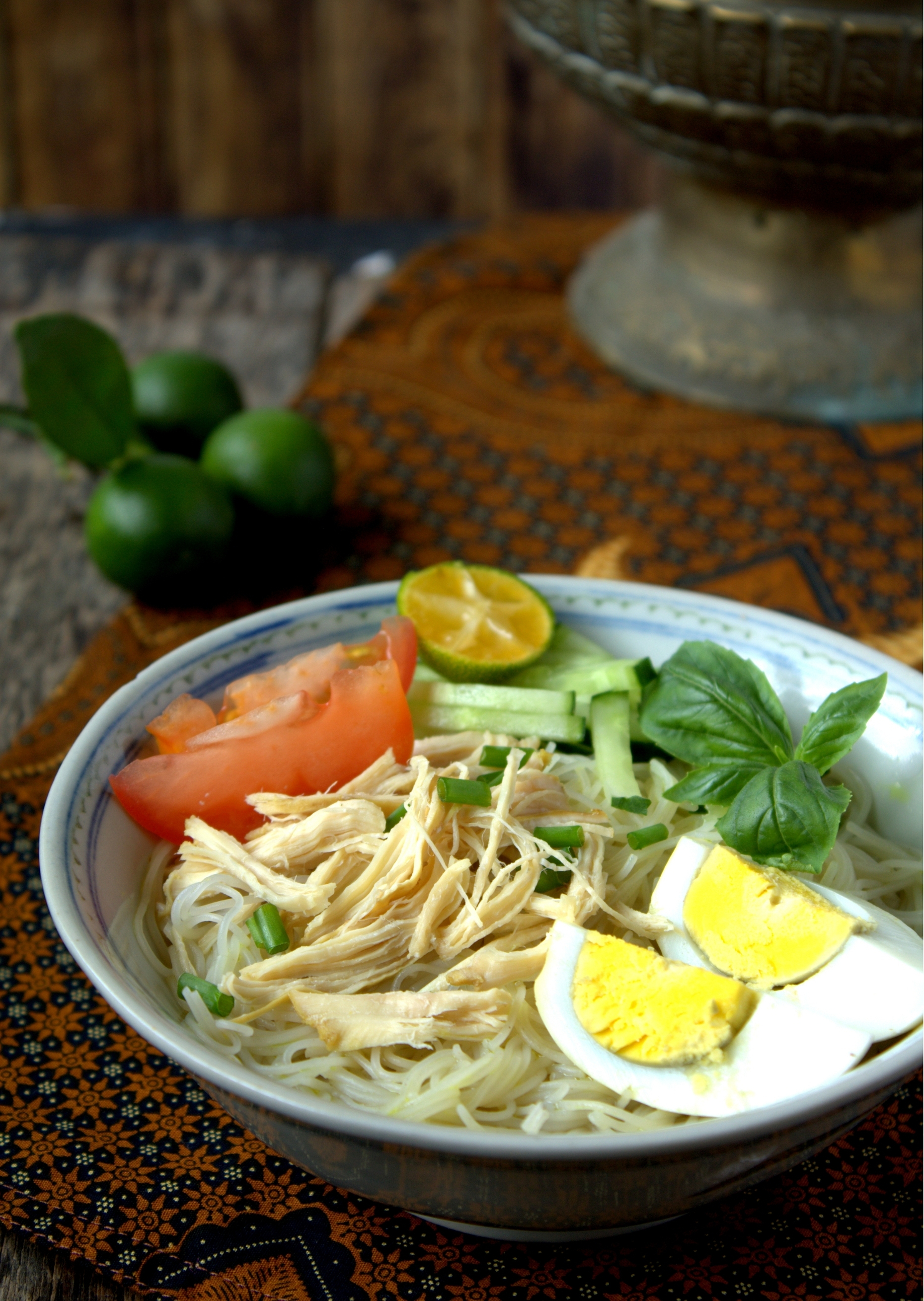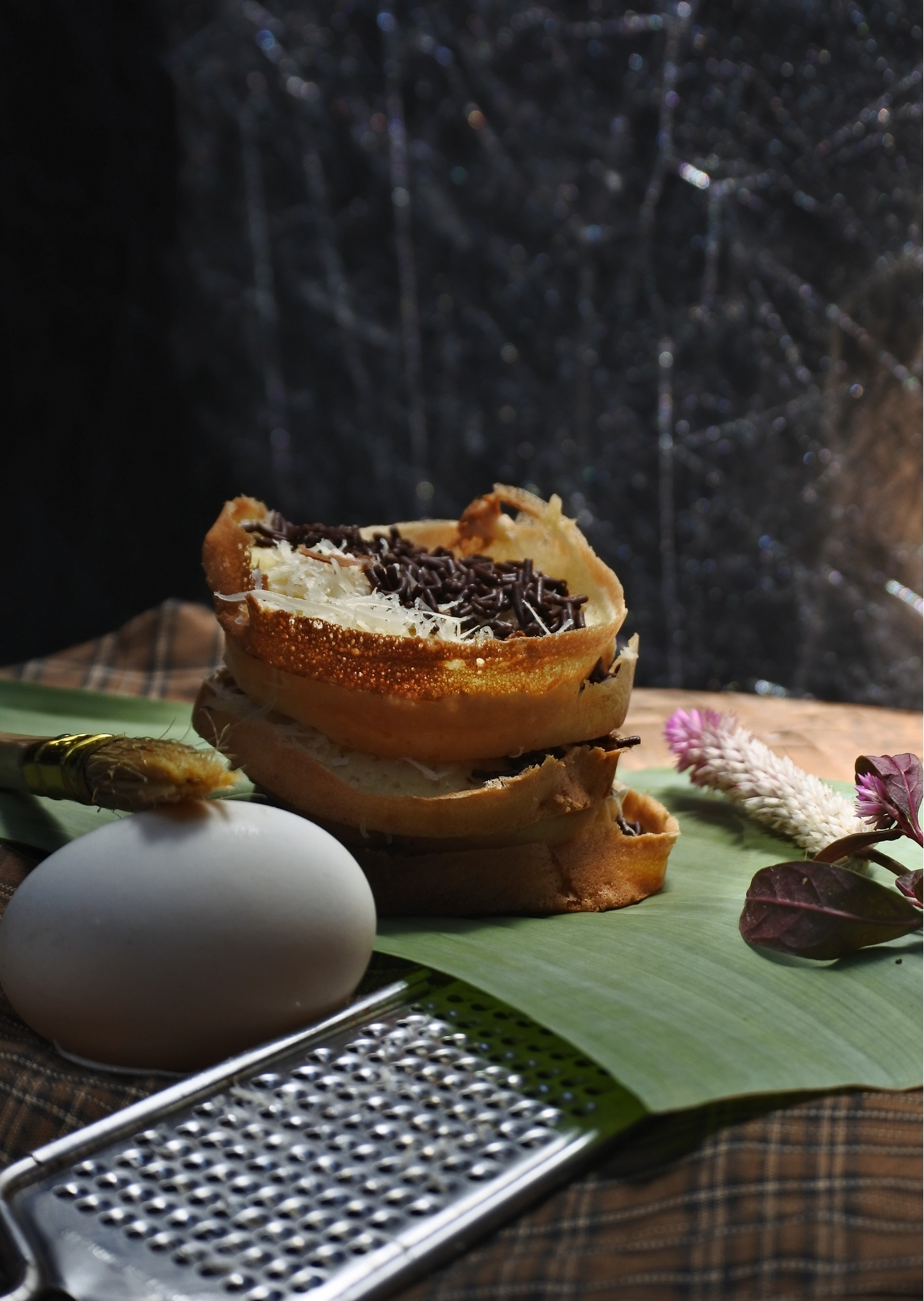Tastes Of Bali: Traditional Balinese Dishes
I share the most affable relationship with Balinese food; my palate {and my stomach} revels in the tastes and flavours of the dishes. 🙂
Food is the smelting furnace that melts out hunger, anxiety, unhappiness, and despair. It is one of those inevitable commonalities that unites the entire human race, and yet in its commonness, food is incredibly diverse among people of different cultures, religions, societies, and regions. This is why I enjoy exploring every country I visit through its gastronomic offerings.
Bali, as I have already pointed out in my previous post, is said to be one of the most interesting southeast locations for travellers on the food trail. You will find hundreds of restaurants speckled across the small island offering a variety of international cuisines in almost every price range. Some of the cuisines are from nations whose names you would have barely heard of. But where global food makes things interesting, local food is the secret sauce that you should definitely try when visiting Bali.

 |
 |
Balinese cuisine is influenced by Indonesian food. In fact, the geographical similarities in South East Asia make many dishes common among cuisines throughout the region which include culinary inspirations from China and India. Bali’s eclectic cuisine is also a product of the cultural differences between the island and the rest of the archipelago. While Bali’s population is mainly Hindu, the rest of the archipelago is predominantly Muslim. This often sees the replacement of beef with pork for obvious religious reasons and some other twists which come from the Hindu way of cooking.
Before I start reminiscing the typical Balinese dishes {or Indonesian foods, which are popularly found on the island}, I am going to quickly familiarise you with the fundamental ingredients which are a part of the cuisine.
Rice is all-pervading. It accompanies almost every dish and is one of the most exported products {Bali’s beautiful rice paddies are a UNESCO World Heritage site}. Spices are the soul of Balinese cuisine. Black and white pepper is generously used by the locals, and not very far behind is the use of coriander, cumin, nutmeg, sesame seeds, and candlenut. These seeds are crushed and mixed in a fish paste which forms a sauce called Basa Gede or Bumbu Bali, which in turn is the foundation ingredient in many local dishes.
Fragrant roots like shallot, garlic, galangal, turmeric, and ginger are also significantly used in the cuisine. And then, there is the endless love of chillies in Balinese dishes. Chilli also happens to be the base ingredient in one of the most popularly used sauces called Sambal. Palm sugar is widely used for sweetening desserts ~ I must tell you that the Balinese have a very sweet tooth. And, the final ingredient that I have added to my list of fundamental ingredients is fish paste which is common in many Southeast Asian cuisines. This paste is prepared with fermented fish which gives a delectable aroma to many Balinese dishes.
Without ruminating further on the ingredients, let me present to you, my lovely readers, Bali’s most traditional and most popular dishes:
- Nasi Goreng, Mie goreng, Nasi Campur or Nasi Bali
These dishes are found throughout South East Asia under different names and are very popular among tourists visiting the island. I am not surprised that their popularity and ubiquity doesn’t end in the island.
Nasi Goreng translates to “fried rice”, and uses garlic, tamarind, shallots, kecap manis {sweet soy sauce}, fish sauce {usually shrimp sauce}, and chilli. It is served with fried egg or chicken or shrimps or vegetables or even dried salted fish. This is a simple dish and yet the flavours and deliciousness of the food makes it a favourite among locals and tourists alike.
Mie Goreng, meaning “fried noodles”, is the noodle version of Nasi Goreng. The noodles replace the rice, and everything else remains as is including the flavoursome taste of the dish.
Nasi Campur or Nasi Bali is another Indonesian dish that has garnered a lot of popularity among tourists. In its beautiful simplicity, this dish is a portion of rice served with various side dishes which consist of meat, vegetables, fish, tempeh, and other Balinese dishes. Most restaurants will let you choose a side dish of your choice from the ones that are ready and displayed on the counters.


- Lawar
This typical Balinese dish is usually served as an accompaniment for the famous Babi Guling. It is prepared from a mix of vegetables, grated coconut, minced meat, and an assortment of herbs and spices. Every village on the island has perfected its own recipe for this dish and so have the restaurants or warung where you can enjoy the dish.

- Babi Guling
This dish is characteristic of Bali’s culinary techniques. The famous roasted suckling pig uses a piglet {which ideally shouldn’t be weaned, although it usually isn’t} which is generously covered in turmeric and stuffed with basa gede and a variety of spices. The dish gets its delectable flavour when the piglet is slowly roasted on a spit to tender perfection. Warung Ibu Oka in Ubud is one of the most famous places for this dish. The piglet is served sliced and comes with some crispy skin, sate and intestines served alongside the dish. The Babi Guling is served traditionally and is a strict no-no for the squeamish and faint-hearted.


- Bebek Betutu
As I look deeper into the gastronomic offerings of Bali, I find another dish that should be on your list of must-try when visiting the island. Bebek Betutu is traditionally served in many Hindu ceremonies. The duck {or chicken ~ Ayam Betutu}, is cooked very slowly to extract the fragrance of the marinade and ensure perfect tenderness of the meat. It has to be ordered a day in advance to allow the dish to be cooked perfectly. The marinade consists of tamarind paste and salt which render softness to the meat and extracts the typical wild smell from it. The bird is then cleaned and stuffed with eggs, cassava leaves, and a wonderful selection of spices. The slow cooking results in a remarkable taste and flavour of spices infused with the meat.

- Sate Lilit
The meat and fish skewers served in many of the Balinese restaurants are inspired by the famous Satay which is popular throughout South East Asia. But there is one small change that brings a vast difference in tastes ~ the skewers. While most of Southeast Asia uses metal skewers, the Balinese have very creatively put bamboo cane, sugarcane, and even lemongrass sticks to use by turning them into skewers. The sate is made of minced meat {pork or fish, and rarely beef or chicken} combined with grated coconut, coconut milk, lemon juice, shallots, and pepper to give the meat flavour and taste which makes it delightful every time you take a bite.


- Soto Babi
Soto is usually named as Indonesia’s national food. This soup is popular throughout the archipelago with variations occurring in the use of meat. Bali’s inclination towards pork makes the Soto Babi a soup that uses pork for the meat and stock.


- Gado Gado
Indonesians love their vegetables as much as they love rice and meat. Gado Gado is a vegetable salad made of steamed vegetables, boiled eggs, tempeh {fermented and boiled soy beans} and fried tofu, served with a peanut sauce topping. This healthy salad is delicious too but you may just want to keep your camera away because good looks are not its forte.


- Bakso
The Balinese love their Bakso {so what if it did not originate in Bali?}, and evidently, this broth with meatballs is also one of the favourite street foods of the island. Pre-cooked meatballs or fish balls are kept ready so that they can quickly be boiled and served in meat broth {mainly pork in Bali}. The dish is usually served with yellow noodles, sautéed vegetables, tofu, boiled eggs, and other ingredients. Variations are common throughout Bali.


- Bubur Injin
Wondering how the desserts in Bali look? Bubur Injin, or black rice pudding, is a traditional Balinese dessert that is made from a mix of black and white glutinous rice. Sweetened with palm sugar and flavoured with coconut milk and pandan leaves, this pudding has a heavenly taste. The Balinese prefer Bubur Injin to be served hot with coconut cream and banana slices to enhance its taste.


- Martabak
The Balinese love their desserts but did I tell you that they love it so much that they even came up with a savoury version of it? The martabak manis is a thick pancake that is usually stuffed with chocolate or bananas and is then fried in butter. The savoury martabak telur is a snack derived from this dish. It is a crepe filled with eggs, onions, meat, herbs, and spices. You will come across both variants at the food stalls on many streets.


- Kopi Luwak
My mention of the popular foods of Bali is incomplete without the famous Kopi {coffee} Luwak. The popularity of this coffee is accredited to two factors. The first being its price which puts it at the top of the list of the most expensive coffees in the world {up to 1000 dollars per kilo}, and second, the fact that the beans are first ingested, partly digested, and then defecated by the palm civet. The process of digestion neutralises the coffee acids giving it a distinctively bitter taste making it a coffee lover’s dream cuppa.
To note: I’ve been alerted to the mistreatment of civets in captivity. If you’re going to visit a plantation where this coffee is produced, please check to ensure that they adhere to fair practice.

To conclude: Looking at Bali through the eyes of a food enthusiast gave me the chance to savour some of the most delicious foods on the island. On the food trail, I also discovered cooking techniques unique to the island like the skewers used in Sate Lilit ~ a minuscule change ~ which brings a remarkable difference in tastes. From authentic Balinese food to international cuisines, I loved the food in Bali and I look forward to more trips that help me explore the local flavours.
On a side note: It’s so much fun to let myself experiment with food with the extra fusion of various techniques from different parts of the world! These are images of my household help to add the finishing touch to my creations. 🙂 You may access my Balinese Master Class blog here.


Do you also share the same emotions for traditional Balinese dishes like I do? Let me know your favourite from the list above!
















These photos are absolutely beautiful, and your writing is impressive as always! Hopefully one day I will not only be able to visit Bali but also take photos like this! 🙂
Oh, so sweet! Thank you very much, Chayanika.
This post sounds absolutely delicious, and the photos are breathtaking! I just came across your blog when looking for Balinese food… I am a food lover and passionate about cooking with spices and lots of chillies! 😀 Lots of love from Pune!
Thank you, Khushi. I’m so glad to hear this!
Tanya, your work is beyond amazing! ❤️
Nasi Goreng • I learnt this dish at a fabulous cooking class on the beautiful Bali island of Nusa Lembongan. It was fascinating to watch how to create all the different pastes, and when to add the spices for max flavour! It’s now a favourite meal at home, and I serve it with a fried egg (from our family chickens).
Thank you for your sweet comment, Pragati!
You did a truly good job here! Love following you on Instagram and on here… You are such an inspiration! ❤️
Just so you know, Bebek Bengil: Dirty Duck Diner is one of my favourite Balinese restaurants. I don’t know how they can make the duck so crispy but also tender. Really enjoy it!
I’m humbled, Ashton. Thank you so much!
Glad to hear it.
I love your food blogs so much! ✨
One of the best parts of travelling in Bali is that you get to try a lot of authentic Balinese cuisine! I particularly loved this squid curry with yellow rice that i tasted… I miss living in Southeast Asia because the food is soooo amazing!
Thank you, Soumya!
Squid curry is something I haven’t tried yet… I bet it tastes amazing!
This is such a beautiful food share. Balinese food is so good, isn’t it?! Thank sweet, sour, salty, and chilli balance… 😀 Hope you’re having a beautiful week, stunner!
That’s kind of you, Vishakha. Thank you so much!
Great post and loving your photos! And yes, love me some sweet and spicy marinated grilled chicken skewers served with red chilli and rock salt! 😀
So, that’s the way to reach happiness! ✨
Wow ~ I’m droooling! Enjoying authentic Balinese cuisine in a relaxed environment with good vibes around, will surely change my mood to a more cheerful one! Thank you for this informative share, Tanya!
You’re welcome, Preeti! Thank you for reading and enjoying this.
Authentic Balinese ‘SATE LILIT AYAM’ served with Balinese condiments & vegetable is definitely my favourite! That being said, your blog is a space for a quick dive into a visual and sensory feast! Thank you for sharing.
Aw ~ you’ve made my day, Archana!
Hands Up if you love Balinese and Indonesian Food! 😀 I adore Plecing Kacang Panjang ~ and it’s distinctive taste with delicious Balinese spices! In addition, this dish is also a good source of protein, which fulfils your vitamin needs like vitamin A & C, antioxidant & many more!
😀 Here’s to virtually serving up tasty Indonesian food!
Ah ~ Balinese food with all its fresh herbs… I want fried duck and Balinese string beans on my plate NOW!! 😀
I hear you… I’m certainly missing the taste of the Island of Paradise!
Wooww ❤️ After reading this, I feel like indulging in a dish of Babi Panggang; crispy crackling slowly-cooked pork belly marinated with Balinese spice paste! Sigh!
Haha! You are just the best, Ankana!
Nothing can beat your integrity and hard work, Tanya! Loved reading this; it’s beautiful articulation touched my heart… You never fail to inspire! ✨
Aw ~ that really means a lot!
I haven’t done a DNA test, but I wouldn’t be surprised if it revealed a small percentage of Indonesian heritage because I just love the food SO. FREAKING. MUCH. Haha!! Keep these delicious foodie shares coming! ✨✨✨
You fill my heart with joy, Satwati!
Yes! Relax in beanbags facing the sea, with that casual fun environment while indulging in some scrumptious Balinese fare! The Bali vibes will make you feel free, happy and refreshed… not to mention – satiated! ❤️
There’s something about a delicious Balinese meal with soothing vibes around, isn’t there?!